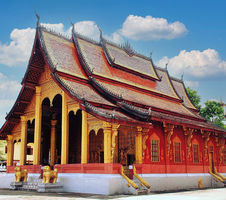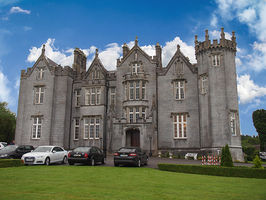
It is said that travel makes us richer and for those who wander the world regularly will understand why, especially when journeying to historical parts of Europe.
With this in mind, Bienvenue – welcome to the village of SAINT ÈMILION in Nouvelle - Aquitaine, the world-famous wine-growing region of southwest France and located at a crossroads with Perigord and Saintonge. Here you are on the verge of one of the most spectacular and historic UNESCO WORLD HERITAGE sites.
We have chosen to reach Saint Èmilion by riverboat in order to see a bigger picture of the region. Our journey begins in the cultural city of Bordeaux where the rivers are constantly buzzing with river craft, especially those enjoying a leisurely river cruise as we are. Bordeaux is situated on the Garonne River, our first introduction to the Gironde region and inland on the Bay of Biscay. This is where our adventure begins and ends. No, I have not gone mad, this is almost a Clayton’s River cruise, one where you go up then come down. I shall explain more to clear up any confusion.
Two rivers make up this cruise that will see us arrive at the medieval village of Saint Èmilion. We come to discover how both drawing water from the Bay of Biscay which flows into the Gironde Estuary, played such a vital role throughout time. The rivers divide into the Garonne and Dordogne with the latter leading us to our final destination. We will go to bed on one river and wake up on another only to do this in reverse. The leisurely pace of this journey soon makes you forget the puzzle once we learn to just enjoy each moment for what it is – stunning and insightful.
 |  |  |
Sailing through the evening so close to the shoreline, we are presented with a divineness that river cruising is noted for. No high rises and lots of pretty lights providing a backdrop to small French towns, mostly built in a pale sandstone and enhanced with aqua shuttered windows. Early the next morning we arrive at Pauillac La Fayette - home to some of the world’s most famous and expensive red wines. Not surprisingly this is where we find – for the wine buff – the estate of Cháteau du Rothschild. Our river boat travellers have been divided into groups and we have been fortuitous enough to have landed in the Rothschild group for the tour. Now this may not sound like much but considering that the waiting list to visit the estate is around 3 years, we feel rather special at this moment. Needless to say, at $1,000 US a bottle we settled for the tasting. It was a little embarrassing when we see others discarding their glasses with hardly a drop consumed. I would love to tell you what we did but that would be – embarrassing as well.
While I am here to tell you about St Èmilion, the journey to arrive into this medieval town is equally important. Our next port is the UNESCO listed town of Blaye Said to be petite yet mighty, Blaye is noted for her Citadel built between 1685 to 1689, a fortification to protect the town from invasions from the sea. One special moment in Blaye from my point of view is a visit to the local street market. Here is where we find wonderful handicrafts by the local people and tempting fresh fruit and vegetables. If our meals had not been provided it would have been very inviting to take a basket full back on board. I think I know where tonight's produce is coming from.

The Bordeaux region is well noted for wines with St Èmilion vying for top position and claiming many award-winning drops. Certainly no newcomer to history, there is evidence that the town began around 35,000 years ago, a fact that I found quite amazing but certified as true.
Inhabited by the Romans from the 12th to the 15th Century, the religion went from Benedictine to Franciscan, a transition that took place in the 13th century. The Franciscans (French) became known as the Cordeliers, an order formed for preaching, begging and prayer. The name was adopted from the rope belt that they wore. The first convent was built outside the walls but was almost decimated during the Hundred Years War. During the French Revolution, the monks were expelled and the property was sold in 1791.
 The internal village began with the Monolith Church. Place de L’Eglise was carved from an enormous limestone rock formation. The village followed as worshippers decided to make this home, many hoping to see the Benedictine Monk who it was said performed many miracles in his time.
The internal village began with the Monolith Church. Place de L’Eglise was carved from an enormous limestone rock formation. The village followed as worshippers decided to make this home, many hoping to see the Benedictine Monk who it was said performed many miracles in his time.
We make our way to the lower cellars through the single-nave church. Here they dug through limestone for 17 metres, to provide not only security for the wine, but the right temperature for ageing and purity.
So why do you need to know this history in order to know more about the St Èmilion of today? Quite simply because this documentation is why the city is what it is, a place where the visitor can see how important it is to French memoirs.

In more recent times the village is noted as a haven for the French Resistance during WWII. Saint Èmilion was a part of the occupied territory, so with great secrecy and deception, the Resistance managed to survive thanks in part to the underground church. Towards the end of the war, many became more brazen chasing after the Germans - only to meet their demise after having spent so much time cloaked from the invaders. Renovations of many of the buildings are done with extreme care as there are still many hidden and unexploded grenades hiding in the walls. It appears that they were ready to die at all costs.
There are some areas of the old village that still remain as reminders of the turbulent history. Les Grandes Murailles – The Great Wall – is all that remains of the original Dominican Monastery from the 12th century. It is only fitting that today vines are the most decorative embellishments that surround the remains.
Maybe you have watched old movies showing the ancient timber houses aside muddy laneways, but to find one still intact in its original form, when the rest of the city appears to have been made from Limestone is quite remarkable. I am talking about the House of La Cadéne built towards the end of the 16th century. Upon further investigation, it has been revealed that the foundations of the building go much further back than this.

To complete our journey it is only fitting that I tell you about some of the wineries in the region, some that I feel would appeal to a wine lover, connoisseur or not.

Chateau Fonrogue is yet another example producing a soft and fruity medium-bodied red wine that is now grown and produced organically. These are mere examples of the many chateaux producing some of the world’s best wines, not to mention still embodying a cache of historical artifacts. It goes without saying that France is noted for the abundance of chateaux throughout the country and there is no shortage within a few kilometres of Saint Èmilion.
Upon reflection after a visit to this historic city, it can make one ponder how such beginnings have continued to shape Saint Èmilion. In many ways they have not had to reinvent themselves to stay afloat, they have merely continued to do what they have always done so well, adapt to changes while keeping the old traditions alive. Generation upon generation continue to produce better wines than their forebears and with such a love for gastronomy, the past will never be forgotten as the two bring friends and family together in celebration.







